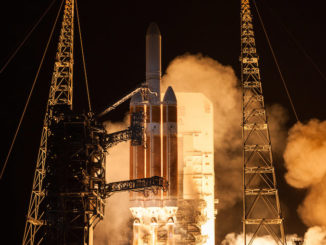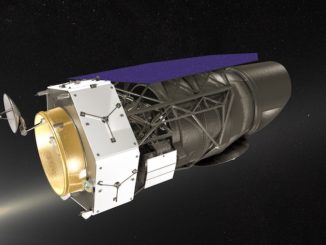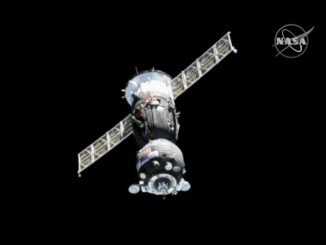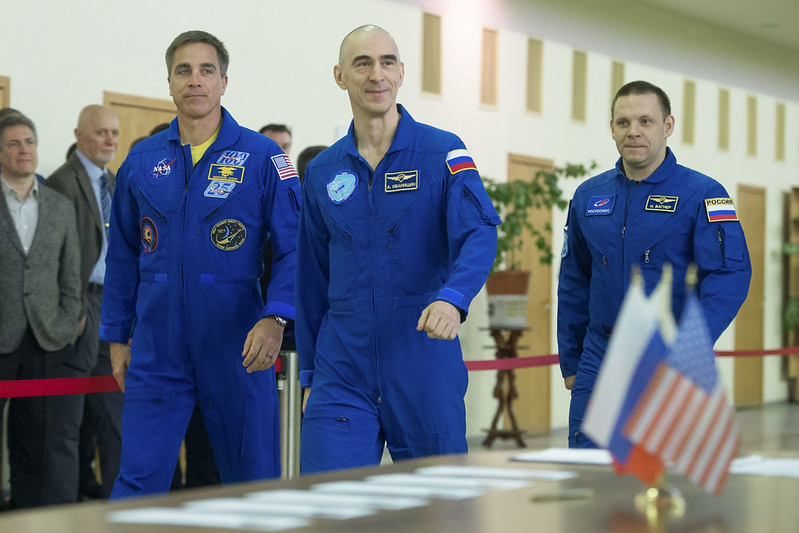
NASA astronaut Chris Cassidy’s family will be watching remotely from halfway around the world when he blasts off April 9 from Kazakhstan to begin a six-month expedition on the International Space Station.
That’s because travel restrictions and stringent social distancing guidelines instituted to slow the spread of the COVID-19 coronavirus pandemic will limit the ability for family members to travel to the Baikonur Cosmodrome for the launch.
“The specifics have been changing rapidly, but when the borders closed — the Russian borders — to non-Russian passport holders, that put a challenge for us because now the launch guests who go into and out of Moscow to get the Baikonur couldn’t get back through Moscow,” Cassidy said Thursday. “So that closed the gates for us and that was the final straw that we pulled the plug on launch support for for my guests.
“As us crew members on a Soyuz rocket, we get 15 guests to come (to the launch), including our spouse and children and that sort of thing. And so none of those folks will come,” Cassidy said.
Launch day at Baikonur is usually a festive affair, with long-held traditions for space crews dating back to the launch of Yuri Gagarin, the first man in orbit, in April 1961.
“What’s super cool normally is you come walking out of the hotel where we stay for the whole two weeks that we’re down there (at Baikonur), and there’s music playing and there’s crowds of people lining the walkway as we proceed from the hotel to the buses,” Cassidy said. “And it’s very, very motivating. It’s super exciting.
“But it’ll be completely quiet,” Cassidy said in a satellite interview from Star City, Russia. “There won’t be anybody there. We’ll just kind of walk out. Maybe we’ll still play music and fire the three of us up ourselves, but who knows?”
Instead, Cassidy said his family may view the launch from mission control in at the Johnson Space Center in Houston, the home base for NASA’s astronaut corps.
“We have an ability to have some guests in the Mission Control Center in Houston, but even that’s a little bit in question in terms of having 100 people in one conference room,” he said. “So it’ll probably be most people just watching on the Internet from wherever their homes are.”
Anatoly Ivanishin, a veteran Russian cosmonaut, will command the Soyuz MS-16 spacecraft. First-time Russian space flier Ivan Vagner will serve as the primary flight engineer in the left seat, with Cassidy in the right seat.
Cassidy and his crewmates are scheduled for liftoff on a Soyuz-2.1a booster at 4:05 a.m. EDT (0805 GMT; 1:05 p.m. Baikonur time) on April 9.
Roscosmos, the Russian space agency, has also announced media representatives will be unable to attend the launch in person at Baikonur.
Launch campaigns at the Russian-operated spaceport are continuing despite travel restrictions in Kazakhstan, where authorities have closed its borders to all travelers except Kazakh citizens, diplomats and people invited by the Kazakh government.
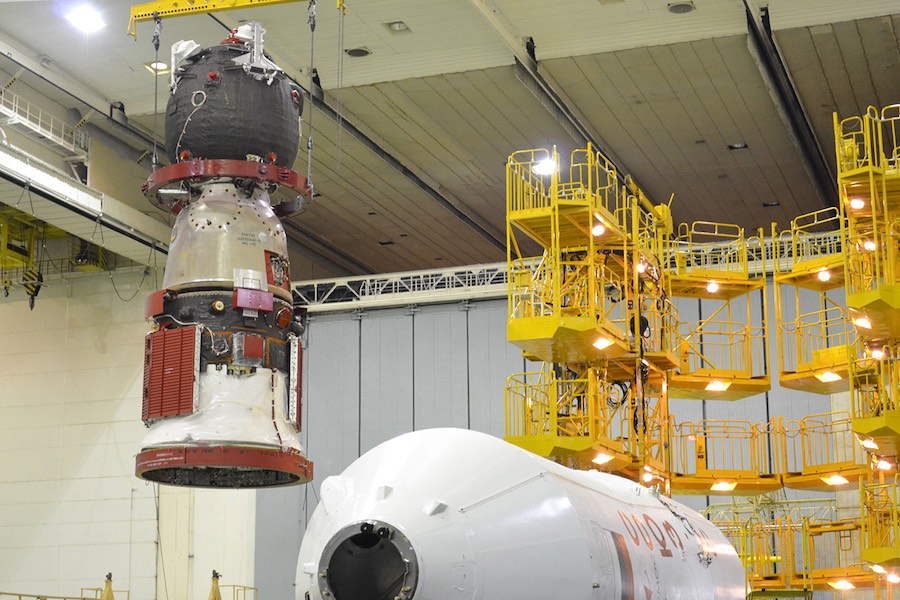
Cassidy, Ivanishin and Vagner will travel from Star City to the Baikonur Cosmodrome later this month for the final two weeks of training, spacesuit and spacecraft fit checks, and other flight preparations.
The Soyuz crew is already in quarantine. That’s part of standard protocol before a spaceflight.
“We actually didn’t enter quarantine early,” Cassidy told Spaceflight Now in an interview Thursday. “Just because by weird, weird timing, our period of time where we entered quarantine as planned sort of lined up with when all of the severe restrictions started falling in place for world citizens. So we were probably a little cautious in the days immediately prior to official quarantine starting, but we didn’t start any earlier.”
Soyuz crews typically visit Red Square in Moscow and lay flowers to honor Russian space icons interred in the Kremlin Wall. That tradition was cancelled.
“I haven’t been out in town, but I hear the streets in Moscow are quiet and empty, similar to what you see on the news around the rest of the world,” Cassidy said. “Here in Star City, it’s kind of like this little oasis in the woods. Life is fairly, I don’t want to say normal, but people are going around, you can go to the local local grocery store, get your hair cut, the training is still happening for the cosmonauts. But that’s in our little enclave of Star City. Outside the gates. I think it’s much more restrictive in the larger metropolitan area.”
Cassidy said he hasn’t been around anyone in recent weeks other than his wife in Star City, his crewmates and other workers who receive regular health screening.
“So it’d be really really strange if if I did contract something,” he said. “Of course, anything can happen between now and April 9, but we’re being really super vigilant so that I can remain healthy to get to the station.”
Cassidy, a former Navy SEAL, said he’s excited for his third trip to the space station.
“I’m excited, bring it on, let’s get on with the work … But my stress level, to be quite honest with you, is a little high for all the people that I care about, like my wife and I have been trying to figure out what’s her plan to go home,” he said.
“When you have a plan and things change out of your control, that’s when it can be a little stressful,” he said. “We’re only human, and we’ll work through and it’ll be fine. But those are the things that are on my mind these days, is what’s what are the travel plans for my friends and family.
“I have one child that’s in New Zealand, and he’s trying to get home and his plans are all screwed up, too,” Cassidy said. “So it’s just the stress. The things that are stressing the rest of the world and the rest of America are the same things that are stressing me right now.”
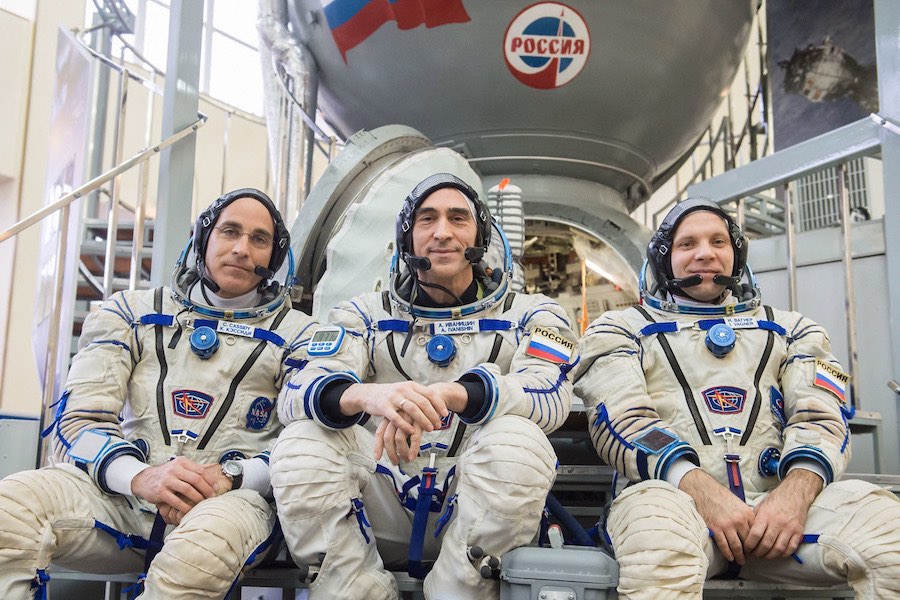
In addition to the extra stress from the coronavirus pandemic, Cassidy’s original crewmates were replaced with back-up crew members last month. Cosmonaut Nikolai Tikhonov, the original Soyuz commander, suffered an eye injury and Russian officials opted to swap both Russian crew members with the back-up crew.
Cassidy says he knows Ivanishin and Vagner well. Ivanishin is trained to perform a spacewalk in a U.S. spacesuit if required, and Vagner is familiar with operating the space station’s Canadian-built robotic arm.
“Of course, we’re getting to know each other more and more as the training intensity ratchets up,” Cassidy said. “When I arrived (in Star City on March 1), we had never been in the simulator together. So we’ve been training intensely for the last two weeks, but we’re ready to go.”
Cassidy, Ivanishin and Vagner will join a three-person crew already aboard the space station for a week-long crew handover beginning April 9.
Russian commander Oleg Skripochka, joined by NASA astronauts Jessica Meir and Drew Morgan, will return to Earth on April 17. Cassidy will take the helm as commander of the space station’s Expedition 63 crew, and his crew will remain on the space station until October.
During that time, Cassidy, Ivanishin and Vagner will have the space station to themselves, at least until the arrival of SpaceX’s Crew Dragon spaceship with NASA astronauts Doug Hurley and Bob Behnken.
Hurley and Behnken are assigned to the first piloted test flight of SpaceX’s commercial crew ferry ship. The two-man team is training for an extended mission that could last months, but NASA has not confirmed the scheduled length of Hurley and Behnken’s stay on the space station.
The Crew Dragon launch is currently scheduled for mid-to-late May, according to NASA.
Until Hurley and Behnken arrive, Cassidy will be the only NASA astronaut aboard the research complex, responsible for leading all the scientific experiments and repairs needed on the U.S. segment of the space station. Russia has slowed production and launches of Soyuz crew ferry ships as NASA transitions to launching astronauts on U.S. vehicles.
“We’ve had the really good fortune (recently) where we’ve had a really robust crew, staffed well, and lots of science available — active and external — so we could just crank out some science over the recent years and months,” Cassidy said. “That’s going to be different. There’s a certain level of number of hours per week that you have to pay to the space station to keep it healthy and running, and keep the systems problem-free, and then if there are problems, to fix them.”
The space station typically has six people on-board at one time. Once new crew ships from SpaceX and Boeing are regularly flying, the station could host long-duration crews of up to seven people.
“That amount of overhead doesn’t care if there’s one Chris Cassidy or six crew members up there, so we’ll have to deal with that, and the balance of which we’ll get some science done,” he said. “I’m going to do my best to have busy, busy days and try to work fast, but also not make mistakes. That’s the worst thing I could do, is hustle myself into screw-ups. So I’ll just proceed with caution and work as quickly as I can, but also know that science is the name of the game, and that’s why I’m there.”
Cassidy said he’ll be happy to welcome Hurley and Behnken on the space station later this year.
“They’re my good friends, and I’ll be there with open arms and excited to greet them, both on a personal level and a professional level, too, where we can really go ahead and get after the science with a few more people,” he said.
Email the author.
Follow Stephen Clark on Twitter: @StephenClark1.

